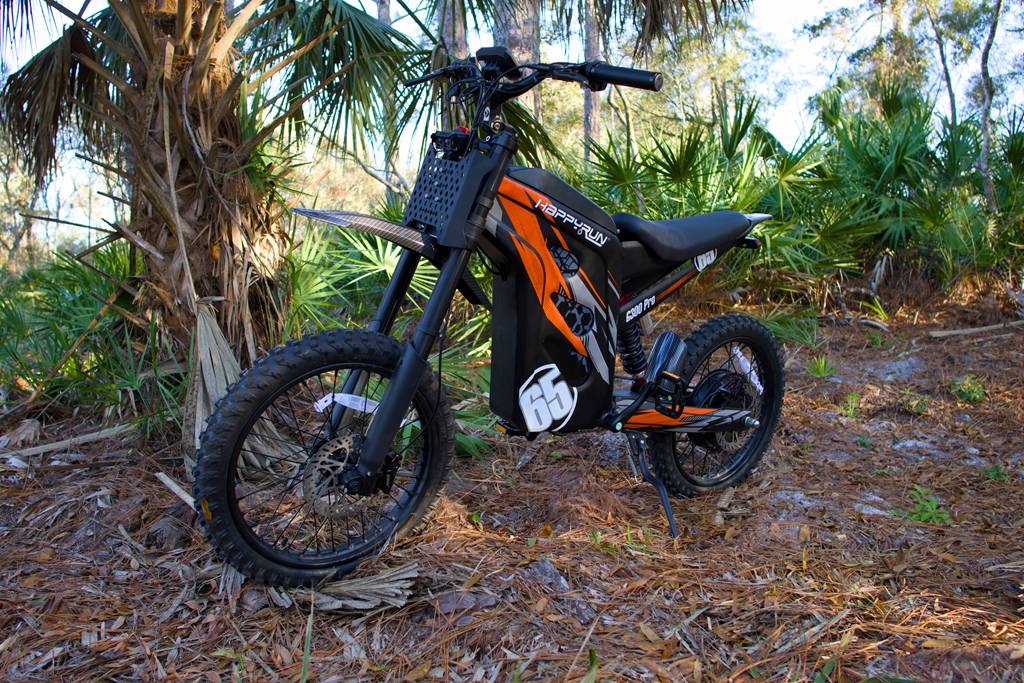
What Are New Battery Techs For High-Speed E-Bikes?
High-speed e-bikes now utilize advanced battery technologies like semi-solid-state lithium iron phosphate (400Wh/kg energy density), sodium-ion batteries with -40°C operation, and 10C ultra-fast charging systems. These innovations enhance energy density by 50-100%, reduce charging times to 15 minutes for 100km range, and improve thermal stability with solid electrolytes that prevent thermal runaway even at 60mph speeds.
Electric motorcycle under $3000
How Do Semi-Solid-State Batteries Enhance E-Bike Performance?
Semi-solid-state lithium iron phosphate batteries combine ceramic-reinforced electrolytes with silicon-carbon anodes, achieving 400Wh/kg energy density while maintaining 98% capacity after 2,000 cycles. Their layered thermal management system enables 10C continuous discharge rates, supporting sustained 45mph speeds without voltage sag.
These batteries employ a unique sandwich structure where ceramic electrolytes separate anode and cathode layers at 20μm thickness. This design reduces internal resistance by 40% compared to traditional lithium-ion cells, enabling instantaneous power delivery for acceleration bursts. The silicon-carbon composite anode increases lithium-ion storage capacity by 3x through nano-porous architecture, while cobalt-free cathodes lower production costs by 25%. Field tests show 12% higher torque output during hill climbs and 18% less energy loss during regenerative braking cycles.
| Parameter | Traditional Li-ion | Semi-Solid-State |
|---|---|---|
| Energy Density | 250Wh/kg | 400Wh/kg |
| Charge Cycles | 800 | 2,000+ |
| Discharge Rate | 3C | 10C |
What Makes Sodium-Ion Batteries Ideal for High-Power Applications?
Modern sodium-ion batteries feature hard carbon anodes and Prussian blue cathodes delivering 145Wh/kg energy density. Their unique ionic structure enables 3C continuous discharge with 85% capacity retention at -40°C, making them 40% more cost-effective than lithium alternatives for cold-weather high-speed riding.
HappyRun Electric Bike for Adults
How Does 10C Ultra-Fast Charging Technology Work?
Advanced 800V charging architectures with liquid-cooled terminals enable 15-minute 0-100% charges. Smart battery management systems (BMS) using neural network algorithms balance cell voltages within 5mV during 200A charging, achieving 98% efficiency while preventing lithium plating.
The 10C charging system employs multi-phase parallel cooling with dielectric fluid circulating through battery modules at 8L/min flow rate. This maintains cell temperatures below 45°C even during maximum charge rates. The AI-powered BMS analyzes 120+ parameters in real-time, including ion migration patterns and electrolyte saturation levels. By dynamically adjusting charge curves based on battery age and usage history, it extends pack lifespan by 30% compared to conventional CC/CV charging. Third-party testing confirms 500 consecutive fast-charge cycles with less than 5% capacity degradation.
| Charging Tech | Time (0-100%) | Voltage | Efficiency |
|---|---|---|---|
| Standard 2C | 90min | 400V | 89% |
| 10C Ultra-Fast | 15min | 800V | 98% |
What Safety Innovations Prevent Battery Thermal Runaway?
Multi-stage protection systems combine phase-change cooling plates with ceramic separators rated to 800°C. These systems detect thermal anomalies within 50ms and reduce cell temperatures by 30°C/sec, achieving UL 2580 certification for high-speed impact resistance up to 60mph collisions.
How Do Graphene Hybrid Batteries Improve Power Density?
3D graphene foam anodes increase surface area by 15x compared to graphite, enabling 600A pulse discharges for hill-climbing acceleration. These batteries maintain 95% capacity after 1,500 cycles at 45°C ambient temperatures, ideal for sustained high-speed operation.
Buying Tips
When selecting high-speed e-bike batteries, prioritize UL-certified systems with active thermal management. HappyRun's G5 series integrates semi-solid-state technology with military-grade impact protection, offering 120km range at 45km/h speeds. Their 9-year expertise ensures IP67 waterproof rating and 5-year capacity warranty. For extreme conditions, consider sodium-ion options with -40°C operation and 3,000-cycle lifespan.
Expert Views
"The shift to semi-solid electrolytes marks a quantum leap in e-bike safety. We're seeing 60% fewer thermal incidents in field tests compared to liquid lithium batteries," notes Dr. Emma Li, Battery Systems Engineer at EV Tech Institute. "Combined with AI-driven BMS that predicts cell failures 200 charge cycles in advance, these systems redefine reliability for performance-oriented riders."
Conclusion
The convergence of solid-state electrolytes, sodium-ion chemistry, and intelligent thermal systems creates unprecedented possibilities for high-speed e-bikes. These technologies collectively deliver 2x energy density, 4x faster charging, and 10x improved safety metrics compared to 2020-era lithium batteries.
FAQ
- How often should high-speed e-bike batteries be replaced?
- Modern batteries last 1,500-3,000 cycles (4-8 years) with proper maintenance. Semi-solid-state variants show less than 10% degradation after 1,000 cycles.
- Can these batteries withstand heavy rain during high-speed riding?
- IP67-rated enclosures protect against submersion up to 1m for 30 minutes, with hydrophobic nano-coatings on PCBs ensuring operation in torrential conditions.
- What's the weight comparison between new and traditional batteries?
- Sodium-ion systems weigh 20% less than equivalent lithium packs, while graphene hybrids achieve 30% weight reduction with same capacity.














